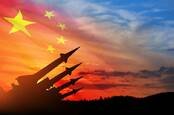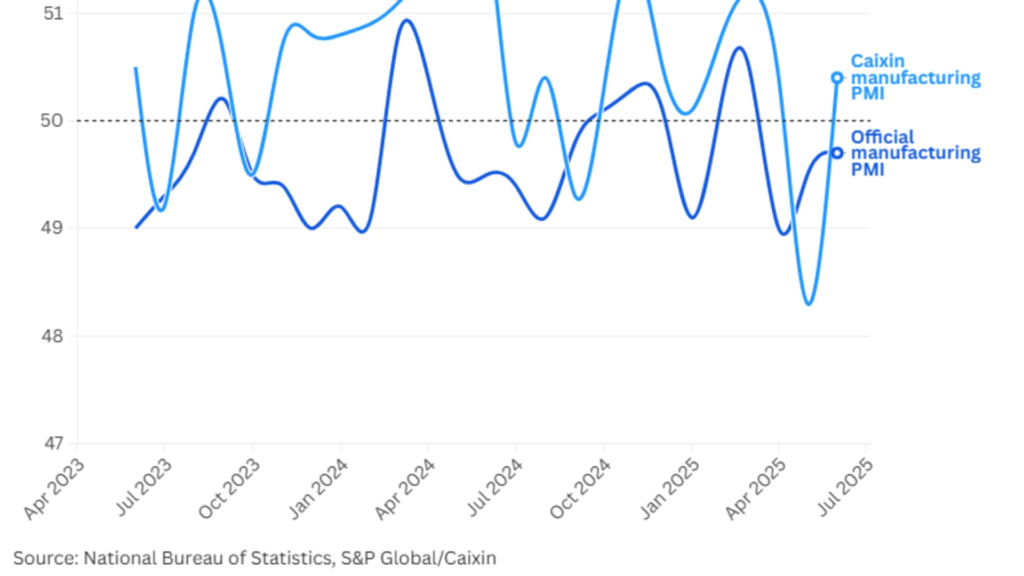
Photo by Christian Lue
The latest Sino-American “handshake”—a 90-day pause on tariffs, semiconductor export bans, and rare-earth chokeholds agreed in Geneva and revived in London this month—was never meant as a love-in. It is a grudging ceasefire, a chance for each superpower to breathe, re-stock, and, above all, rewrite the operating manual of twenty-first-century techno-commerce. The United States plainly hopes the pause will buy time for fresh sanctions should Beijing misbehave. China, if it chooses, can reach for something more ambitious: authorship of the very rules that govern the next decade of chips, magnets, and green technology.
Beijing still supplies more than 90 percent of the world’s rare-earth magnets, the irreplaceable slivers of neodymium, dysprosium, and terbium that make electric vehicles glide and precision missiles swerve. In May, China’s overseas shipments of these magnets plunged to 1,238 tons—down 74 percent year-on-year after export licenses were tightened, reminding Detroit and Düsseldorf who really holds the screwdriver. A nation with that kind of market share does not merely play defense; it can dictate the size and color of the football.
The will to lead is already evident in fiscal muscle. The third phase of the National Integrated Circuit Industry Investment Fund—popularly known as the “Big Fund”—injected 344 billion yuan, or roughly $47.5 billion—into domestic chip-making capability. That move, in tandem with a growing roster of state-backed AI hardware ventures, is not a mere survival strategy. It is groundwork for a future in which China plays architect, not just assembler.
Yet money does not by itself bestow regulatory authority. If anything, it demands follow-through: norms, standards, and protocols that ensure that the state-led industrial ascent translates into global rule-making capacity. Markets may be influenced by subsidies, but they are governed by trust—codified, repeatable, enforceable trust. That is the terrain where China must now plant its flag.
The global semiconductor market, projected to grow from $627 billion in 2024 to nearly $697 billion by the end of 2025, offers the perfect proving ground. China currently accounts for about 16 percent of total production—well short of its ambitious Made in China 2025 goal of 70 percent self-sufficiency, but sufficient to make it the world’s third-largest chip producer behind Taiwan and South Korea. Even incremental gains in this space amplify its voice in shaping what kind of semiconductors get built, for whom, and under what terms.
Ironically, it’s U.S. strategy that has sharpened China’s clarity. Export bans on advanced chips and manufacturing equipment, intended to choke Beijing’s AI momentum, may have yielded the opposite result. Nvidia CEO Jensen Huang has admitted that U.S. export curbs have not halted Chinese innovation but spurred it. His company’s share of China’s AI chip market has already declined from near total dominance to just over 50 percent. When even Silicon Valley’s elite begin admitting the limits of coercive leverage, the time is ripe for Beijing to shift from reactive position to proactive codification.
The challenge now is to operationalize China’s strategic leverage into globally palatable frameworks. One obvious lever is traceability. Beijing could initiate a rare-earth origin protocol—digital tagging from mine to magnet—that addresses Western concerns about ethical sourcing while reinforcing China’s pivotal role as steward of the resource. Another is conditionality in green tech. By offering EV batteries and solar components under the condition that importers comply with Chinese environmental audit criteria, Beijing could merge ecological diplomacy with trade influence in a manner that plays well both at home and abroad.
Similarly, the time has come for China to propose a multilateral intellectual property framework for AI-specific semiconductors. Rather than continuing to handle foreign patent minefields, Chinese firms could co-lead an IP commons licensed in yuan, adjudicated by neutral venues such as Singapore or Geneva, and open to allies across Asia, Africa, and Latin America. That would not just alleviate legal risk; it would position China as a systems designer, offering public goods in the digital age.
The data governance gap provides yet another arena for leadership. Between the surveillance capitalism of Silicon Valley and the privacy absolutism of Brussels lies a space Beijing could define. Such a “sovereign resilience” framework could ensure local control over personal data while permitting cross-border analytics under verifiable, rules-based certification. That model would not please libertarians, but it could resonate with governments seeking balance among security, sovereignty, and economic pragmatism.
Of course, none of this will go uncontested. Western analysts will scoff that China is attempting to game a system it never respected. Yet industry often cares more for clarity than ideology. If China can lower transaction costs, smooth out compliance ambiguity, and guarantee reliability, even reluctant partners may line up—not because they agree but because they cannot afford to sit out.
Historical precedent offers clues. Bretton Woods, the blueprint for postwar financial stability, was drafted before World War II had even ended. What begins as a tactical truce can evolve into systemic transformation—if someone bothers to write the rules. If China does not draft those protocols, they will be written elsewhere, likely in narrower language and with less accommodating terms.
The latest U.S.-China truce may not outlast the next debate cycle. That leaves Beijing with a narrow but potent window: to test its standards with ASEAN or Gulf partners, to pilot regulatory templates, to issue white papers in multiple languages, and to set the tone before someone else sets the trap.
The rare-earth slowdown of May jolted global automakers. The London truce muted panic but didn’t resolve the deeper question: who governs the levers of tomorrow’s tech economy? If China wants to stop dancing to someone else’s beat, now is the time to compose the score.






![[News] China Rare Earth Group Reportedly Hit by Executive Resignations Amid U.S.-China Trade Tensions](https://koala-by.com/wp-content/uploads/2025/07/Rare-Earth-China-GRINM-Advanced-Materials-20250609-624x404.png)

